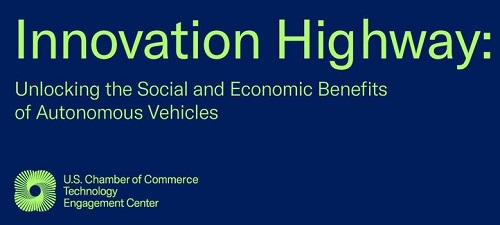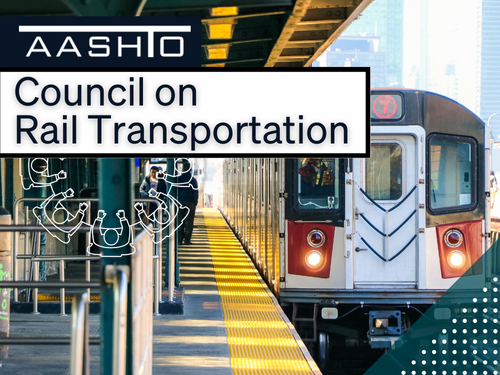The U.S. Chamber of Commerce recently released a report that quantifies the potential social and economic benefits of passenger autonomous vehicles or AVs.
[Above photo by Waymo]
That report – entitled “Innovation Highway: Unlocking the Social and Economic Benefits of Autonomous Vehicles” – employs a variety of economic models to examine several scenarios around the introduction and adoption of AVs, measures the potential for AVs to sharply reduce traffic accidents and fatalities, enhance people’s mobility and access, reduce greenhouse gas emissions, and provide substantial economic benefits for those residing in the U.S.
[Editor’s note: The American Association of State Highway and Transportation Officials also addressed these topics in both an eight-page policy paper and during a knowledge session at its 2022 Annual Meeting in Orlando; one focused on the future of connected and autonomous vehicles or CAVs.]
“As autonomous vehicle technology moves from proving grounds to city streets, this report quantifies the tremendous benefits these cars bring to consumers, businesses, and the economy, and presents a historic opportunity for the U.S. to lead in this industry of the future,” explained Jordan Crenshaw, senior VP for the U.S. Chamber’s Technology Engagement Center, in a statement.
“However, autonomous vehicle policy in the U.S. is stuck in neutral, making it challenging to unlock the promising benefits of this transformational technology,” Crenshaw added.

The report also addresses the “geopolitical implications” of the emergence of AVs in U.S. and global markets and cautions that American producers will face strong competition from state-subsidized Chinese manufacturers and other foreign competitors.
“The country that leads the world in autonomous vehicle innovation will set the rules of the road for a generation,” said Dr. Robert J. Shapiro, lead author of the U.S. Chamber’s report and chairman of Sonecon, LLC.
[Editor’s note: Michigan State University and the U.S. Army Ground Vehicle Systems Center recently launched a new mobility research initiative as part of an ongoing five-year research program to advance autonomous ground vehicle research with Central Michigan University and the University of Michigan.]
The U.S. Chamber’s report noted that the timeframe for widespread AV adoption varies – with some experts predicting it to be within the next five to 15 years.
Meanwhile, many state departments of transportation across the country are also playing a key role in a wide variety of AV projects.
In January, AVs began operating on rural roadways in central and southeast Ohio as part of the Rural Automated Driving Systems or RADS project spearheaded by DriveOhio, a division of the Ohio Department of Transportation.
Also in January, the Pennsylvania Department of Transportation participated in autonomous transit vehicle testing in Philadelphia, along with researchers from Drexel University and consulting firm AECOM.
In June, the Hawaii Department of Transportation began operating its very first autonomous all-electric passenger shuttle bus. And in 2022, the Minnesota Department of Transportation helped launch a free, low-speed, driverless, all-electric, multi-passenger shuttle service called “Bear Tracks” for the city of White Bear Lake. The agency also helped May Mobility and transit technology provider Via test AVs for rural transit service as well.
 Nation
Nation
Registration Open for AASHTO’s Winter Rail Meeting
December 19, 2025 Nation
Nation

